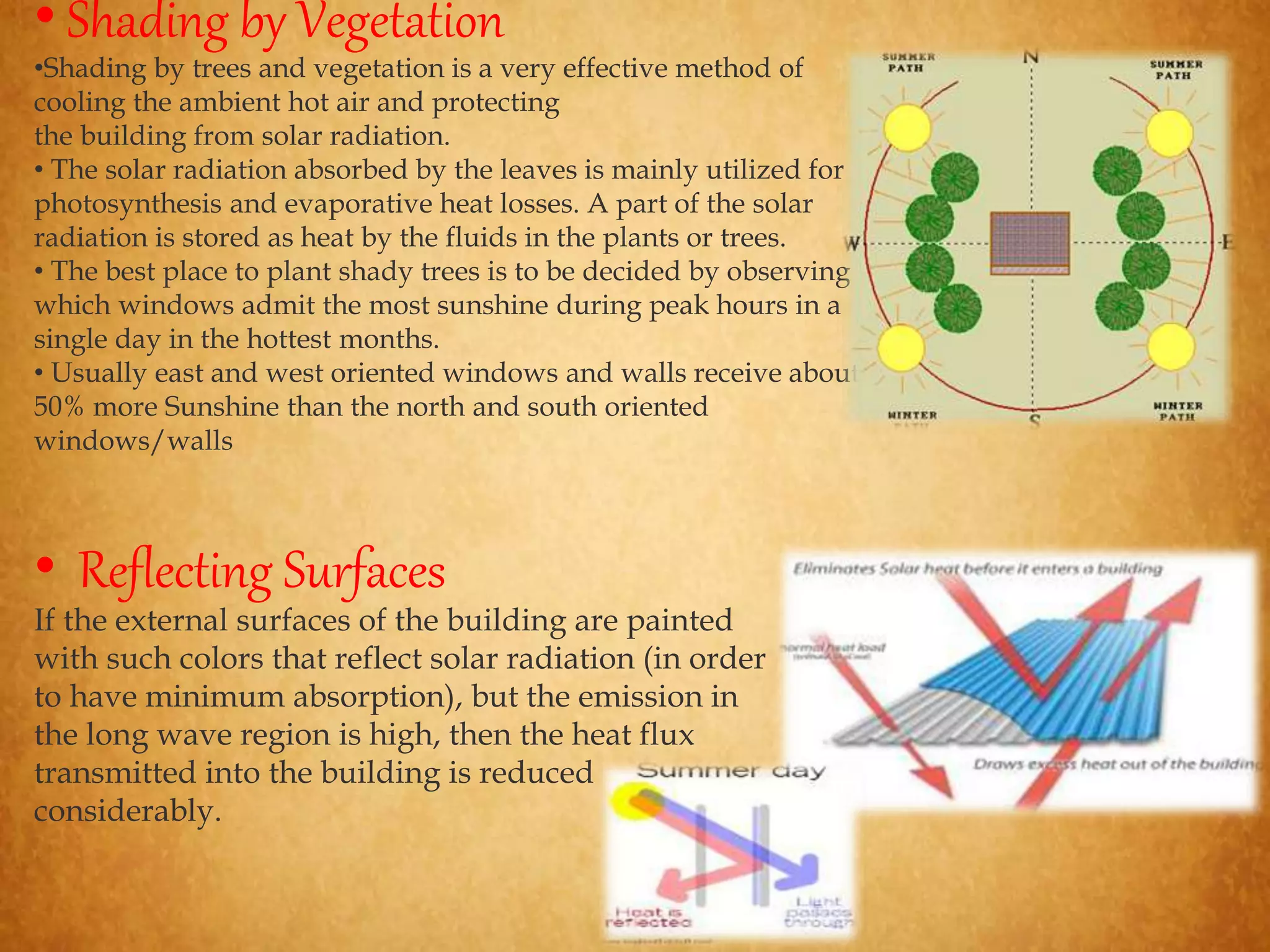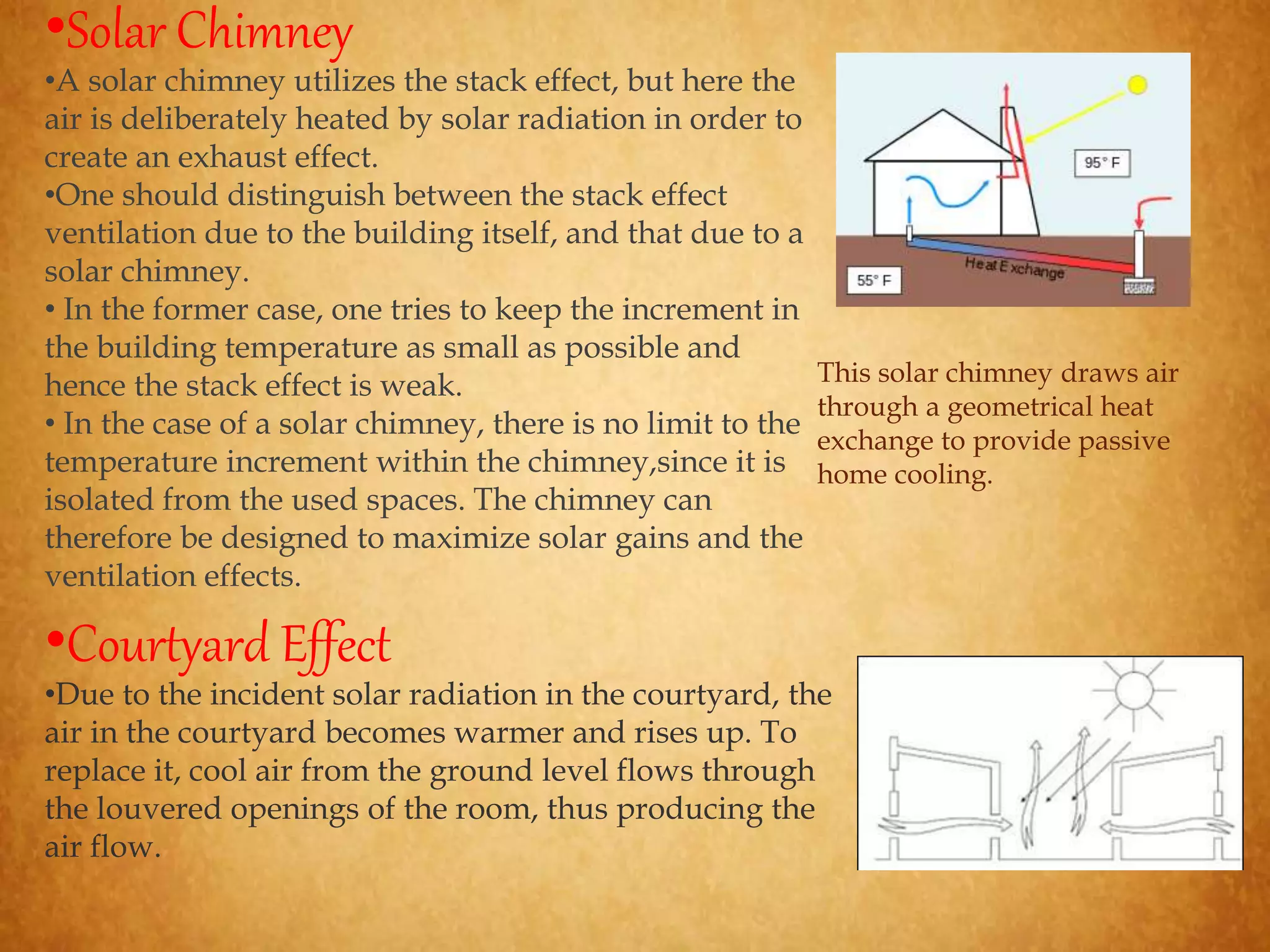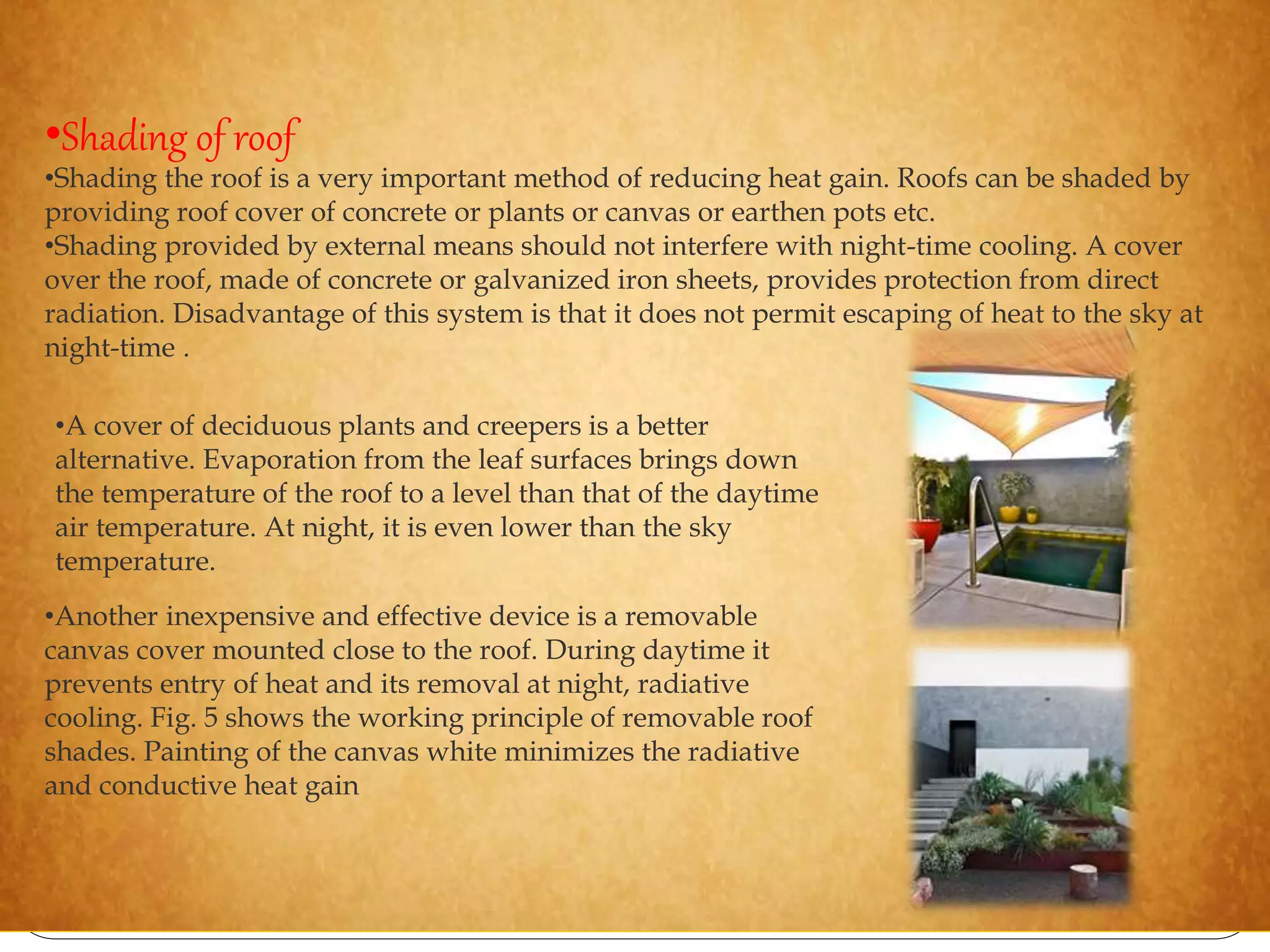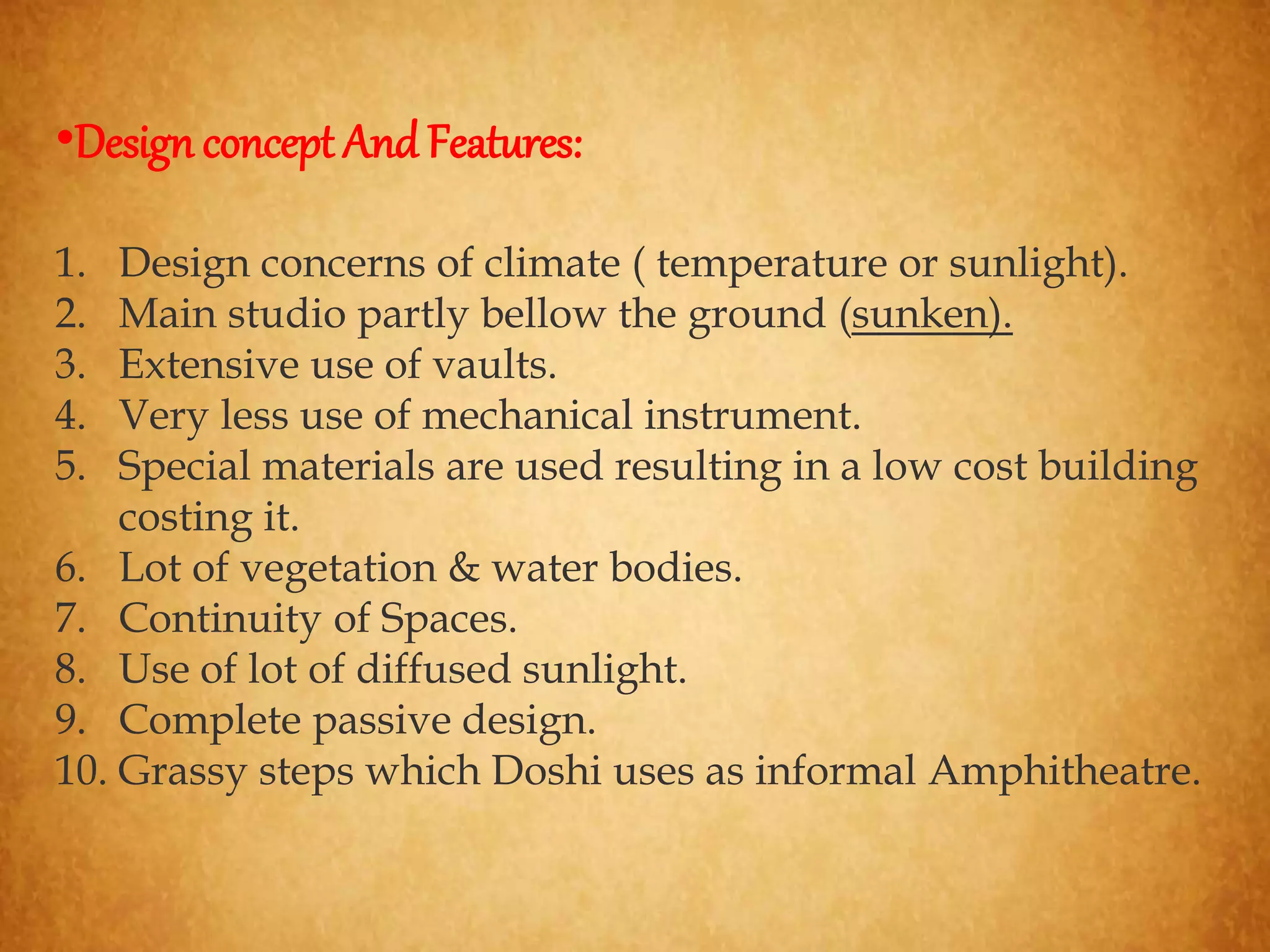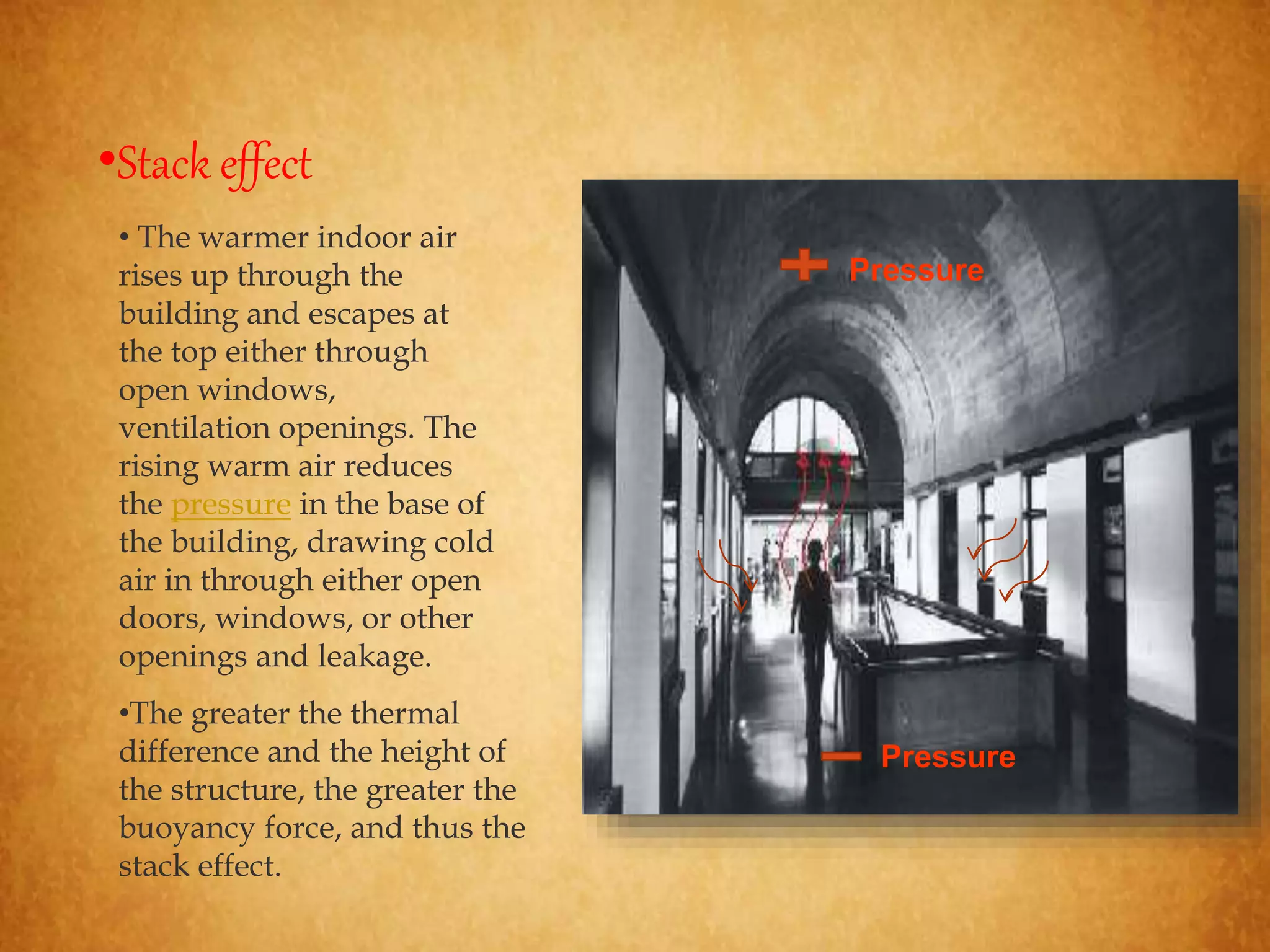The document studies architecture design in hot-arid zones, highlighting climates where populations rely on specialized adaptations for survival. It outlines design guidelines to mitigate heat gain and enhance comfort via shading, ventilation, and thermal mass strategies. Examples, particularly the Sangath building in Ahmedabad, illustrate the effective use of passive design techniques and natural elements in architecture for such environments.














